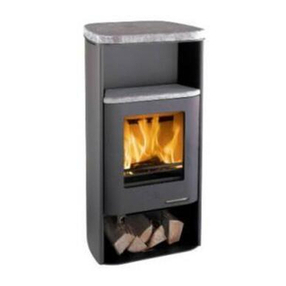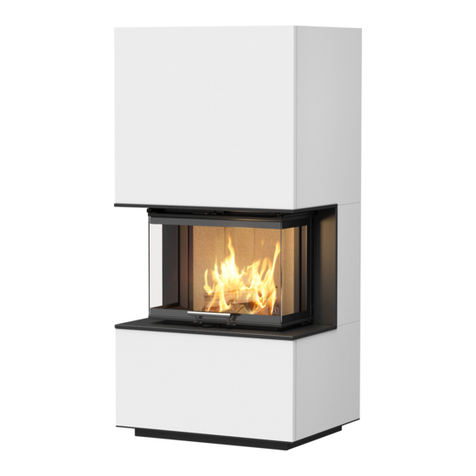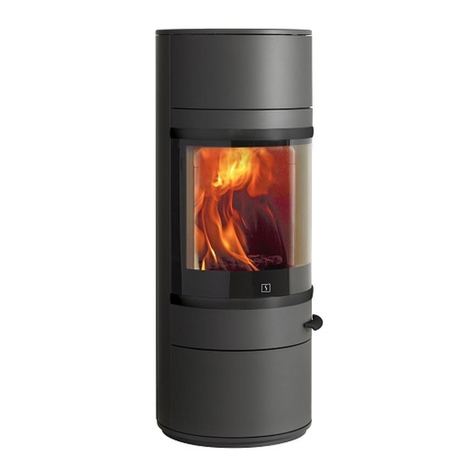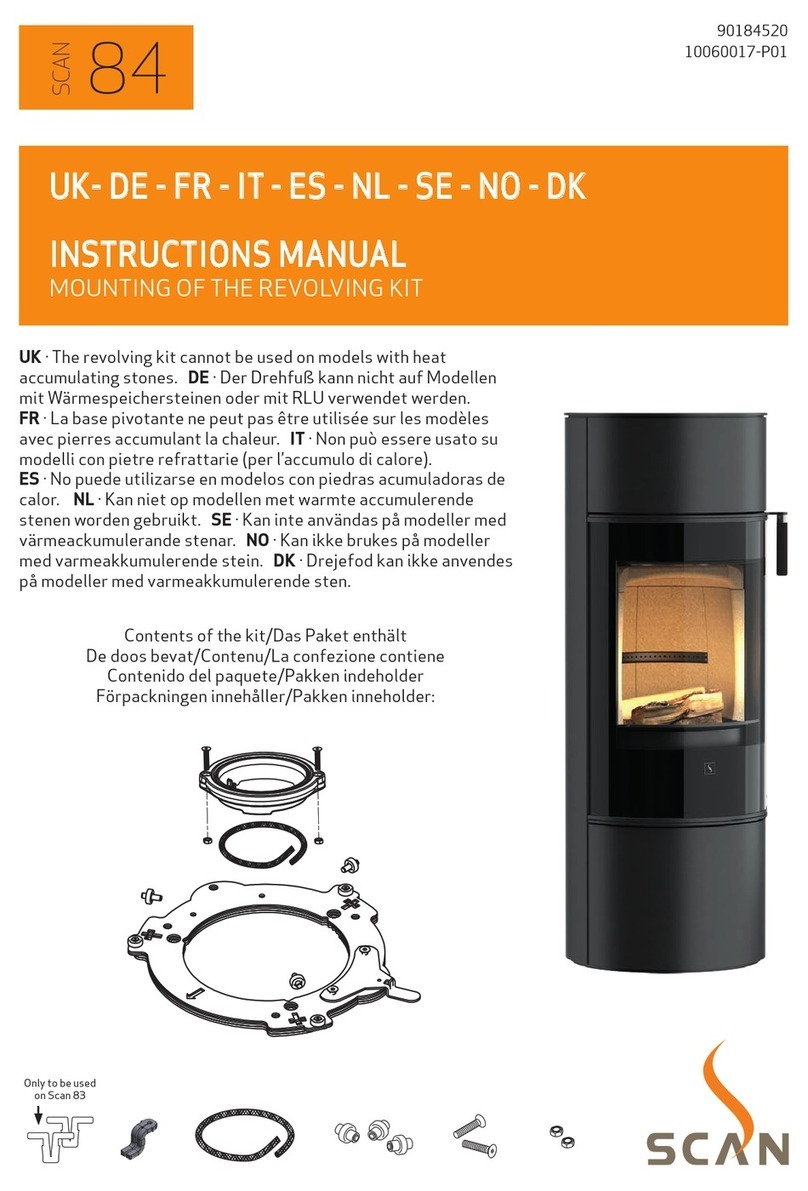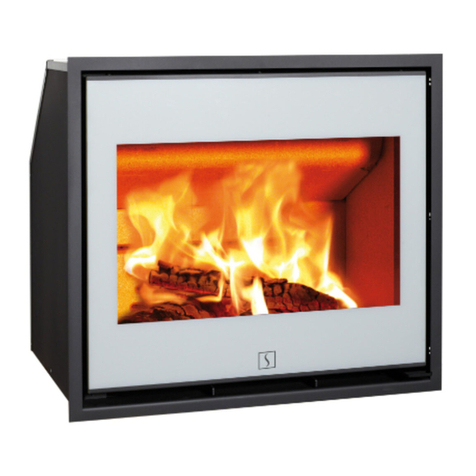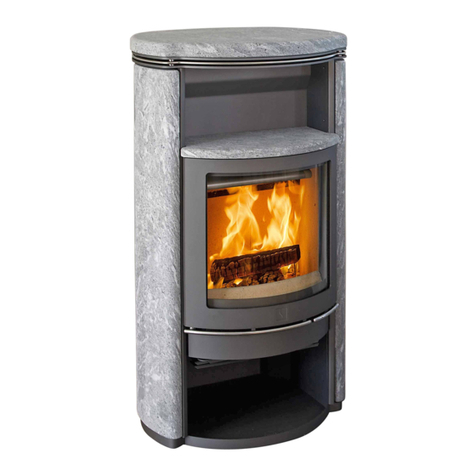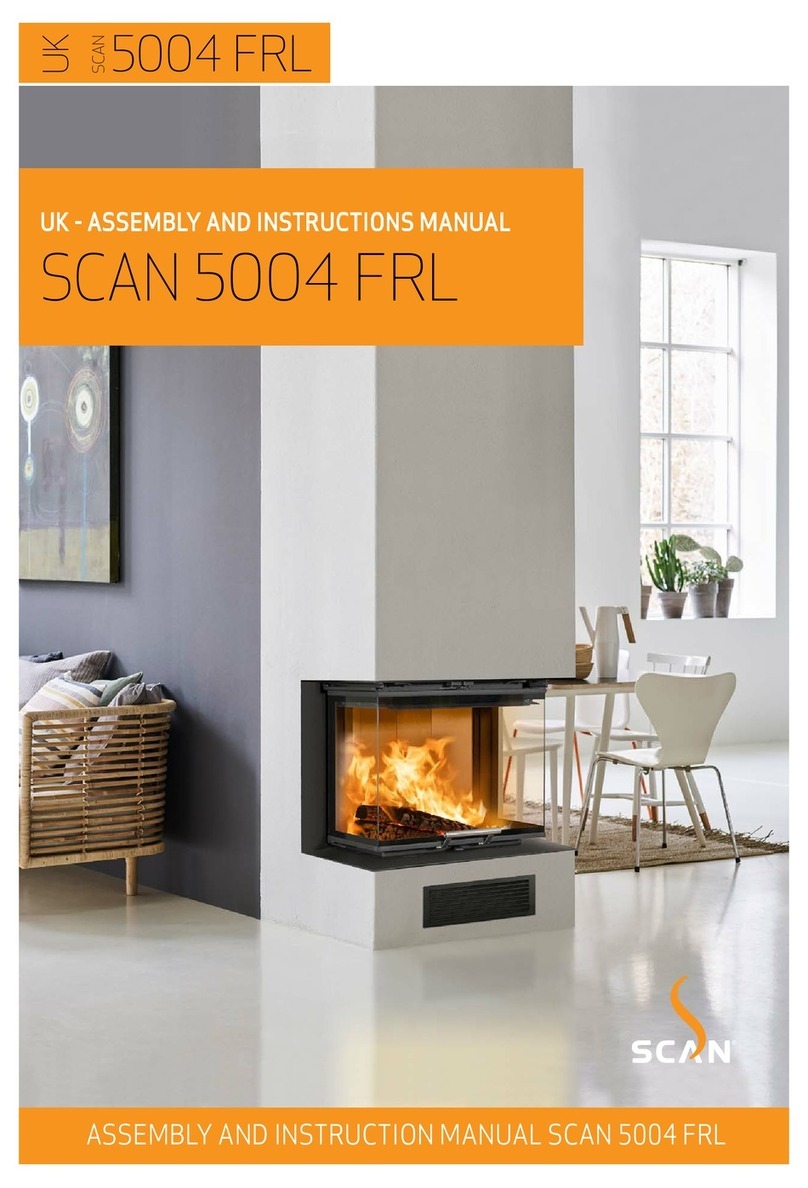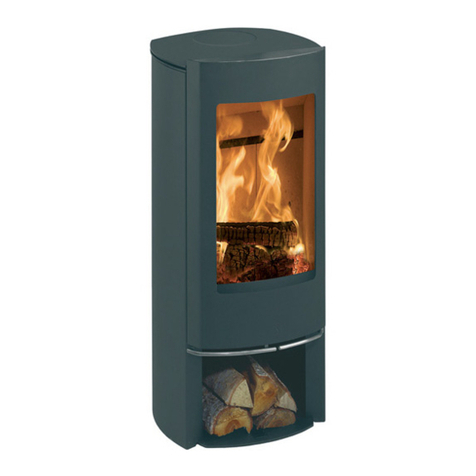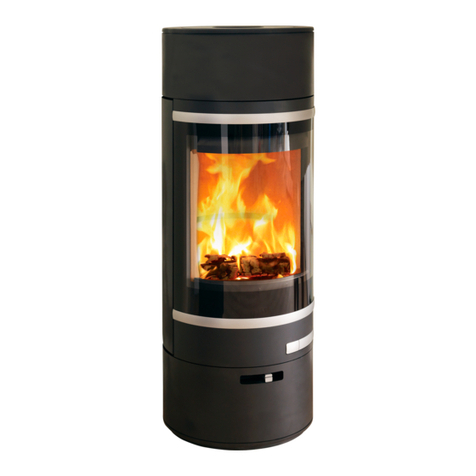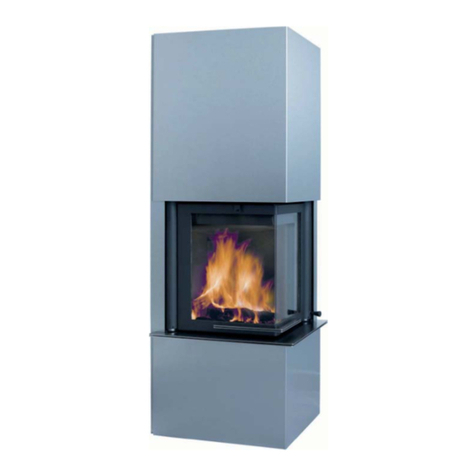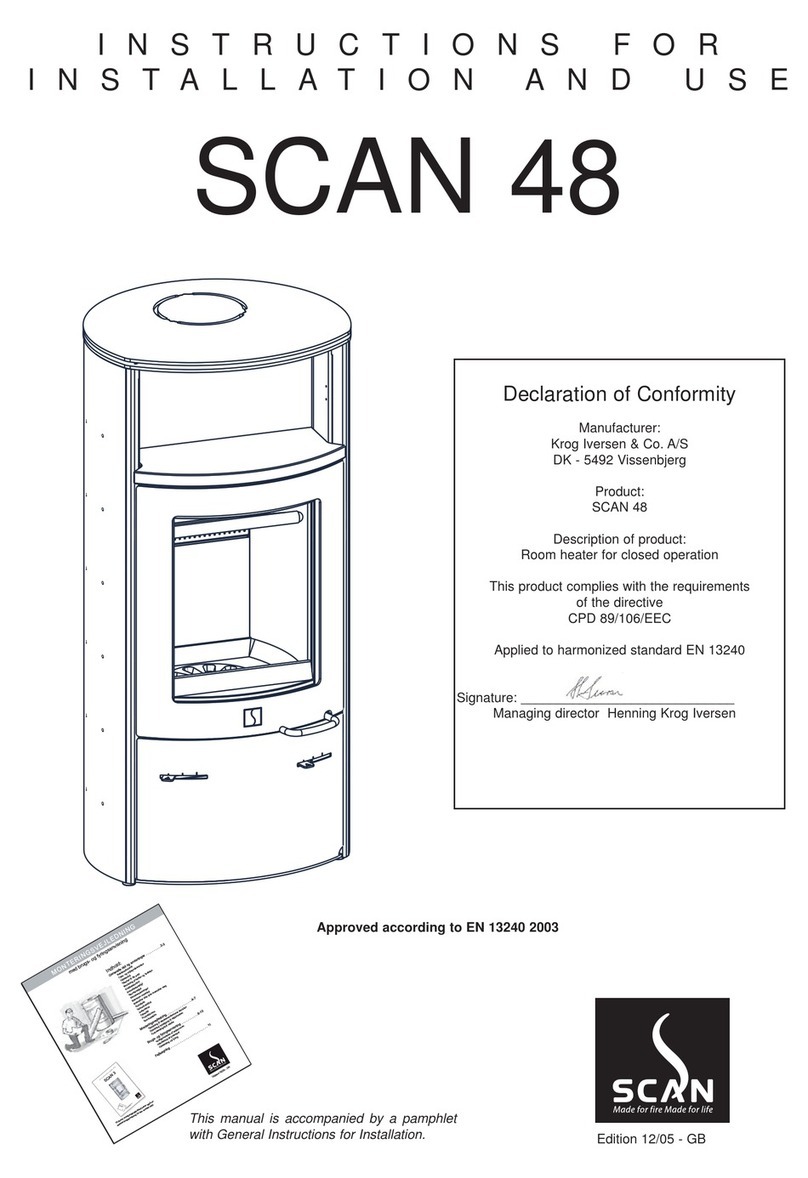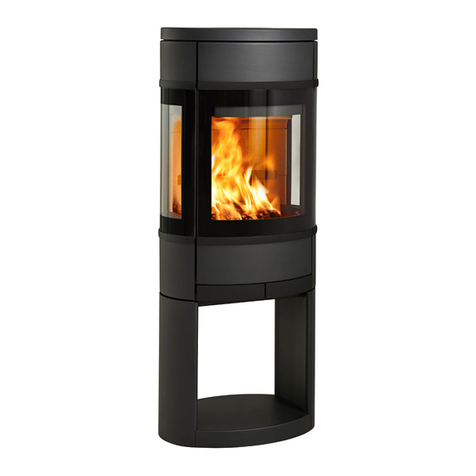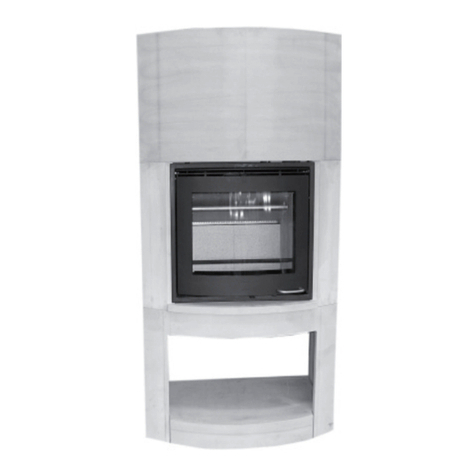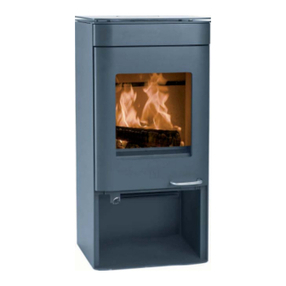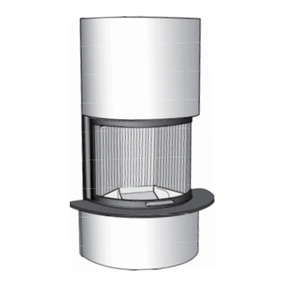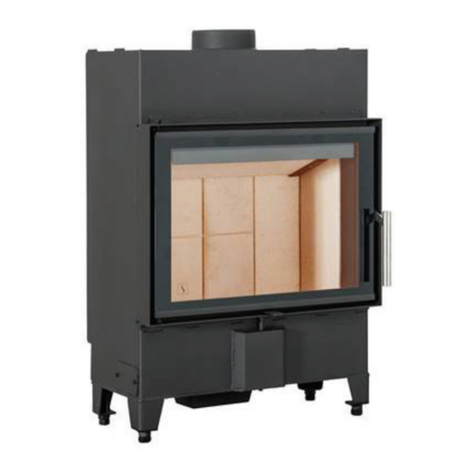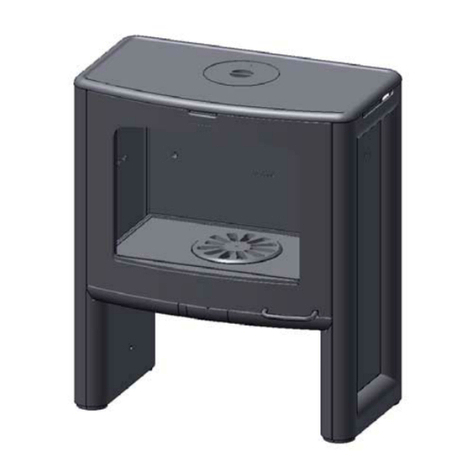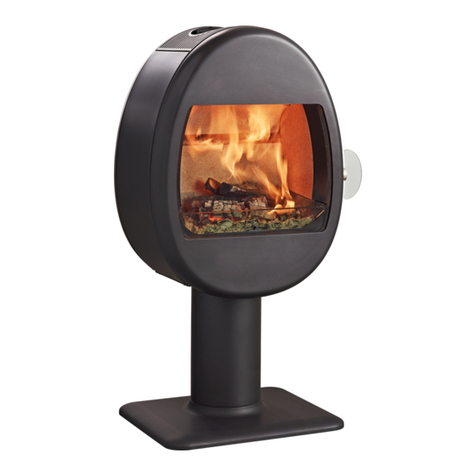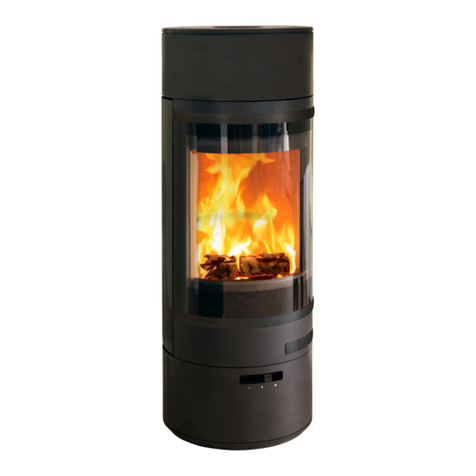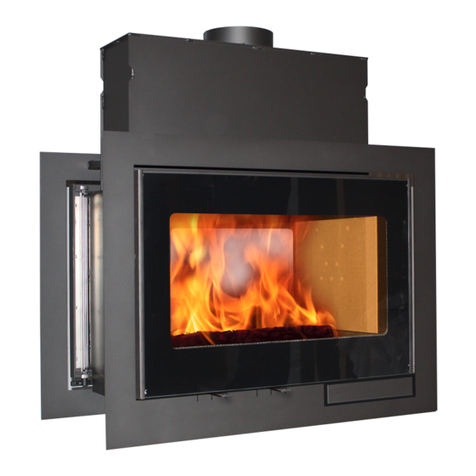
7
3.0 Safety
NB! We recommend that installation be carried out by a
qualified installer, to ensure that the product delivers maximum
performance and safety.
Any modifications to the product by the distributor, installer
or consumer may result in the product and safety features not
functioning as intended. The same applies to the installation
of accessories or optional extras that are not supplied by the
fireplace manufacturer. This may also be the case if parts that
are essential to the functioning and safety of the fireplace
have been disassembled or removed. In all these cases, the
manufacturer is not responsible or liable for the product and
the warranty shall become null and void.
The Clean Air Act
“The Clean Air Act 1993 and Smoke Control Areas”
Under the Clean Air Act local authorities may declare the
whole or part of the district of the authority to be a smoke
control area. It is an offence to emit smoke from a chimney of
a building, from a furnace or from any fixed boiler if located in a
designated smoke control area. It is also an offence to acquire
an “unauthorised fuel” for use within a smoke control area
unless it is used in an “exempt” appliance (“exempted” from
the controls which generally apply in the smoke control area).
The Secretary of State for Environment, Food and Rural
Affairs has powers under the Act to authorise smokeless
fuels or exempt appliances for use in smoke control areas in
England. In Scotland and Wales this power rests with Ministers
in the devolved administrations for those countries. Separate
legislation, the Clean Air (Northern Ireland) Order 1981,
applies in Northern Ireland. Therefore it is a requirement that
fuels burnt or obtained for use in smoke control areas have
been “authorised” in Regulations and that appliances used to
burn solid fuel in those areas (other than “authorised” fuels)
have been exempted by an Order made and signed by the
Secretary of State or Minister in the devolved administrations.
Further information on the requirements of the Clean Air Act
can be found here : http://smokecontrol.defra.gov.uk/
Your local authority is responsible for implementing the Clean
Air Act 1993 including designation and supervision of smoke
control areas and you can contact them for details of CleanAir
Act requirements”.
Your local authority is responsible for implementing the Clean
Air Act 1993 including designation and supervision of smoke
control areas and you can contact them for details of CleanAir
Act requirements”
3.1 Fire Prevention Measures
• There is a certain element of danger every time you use
your fireplace. The following instructions must therefore be
followed:
• The minimum safety distances when installing and using the
fireplace are given in fig. 1.
• Ensure that furniture and other flammable materials are not
too close to the fireplace. Flammable materials should not be
placed within 850mm of the fireplace.
• Allow the fire to burn out. Never extinguish the flames with
water.
• The fireplace becomes hot when lit and may cause burns if
touched.
• Only remove ash when the fireplace is cold. Ash can
contain hot embers and should therefore be placed in a
non-flammable container.
• Ash should be placed outdoors or be emptied in a place
where it will not present a potential fire hazard.
In case of chimney fire:
• Close all hatches and vents.
• Keep the firebox door closed.
• Check the loft and cellar for smoke.
• Call the fire service.
• Before use after a fire an expert must check the fireplace
and the chimney in order to ensure that it is fully functional.
4.0 Installation
N.B. Check that the fireplace is free of any damage prior to
commencing installation.
The product is heavy! Make sure you have assistance when
erecting and installing the fireplace.
4.1 Floor
Foundation
Youneedtomakesurethe foundationissuitablefora fireplace.
See “2.0 Technical Data” for specified weight.
Combustible floor protection
If the fireplace is to be mounted on a combustible floor, cover
the floor under and in front of the fireplace with a plate made of
metal or other non-combustible material. The recommended
minimum thickness is 0,9 mm (fig. 1a).
Any flooring made of combustible material, such as linoleum,
carpets, etc. must be removed from under the floor plate.
Requirement for protecting combustible flooring in front of
fireplace
The front plate must be in accordance with national laws and
regulations.
Contact your local building authorities regarding restrictions
and installation requirements.
4.2 Wall
Minimum distance to combustible wall
For distance to combustiblewall see fig. 1b.
Minimum distance to incumbent
firewall
For distance to incumbent firewall see fig. 1c.
Firewall requirement
The firewall must be at least 100 mm thick and be made of
brick, concrete-stone or light concrete. Other materials and
constructions with satisfactory documentation may also be
used.
English


















